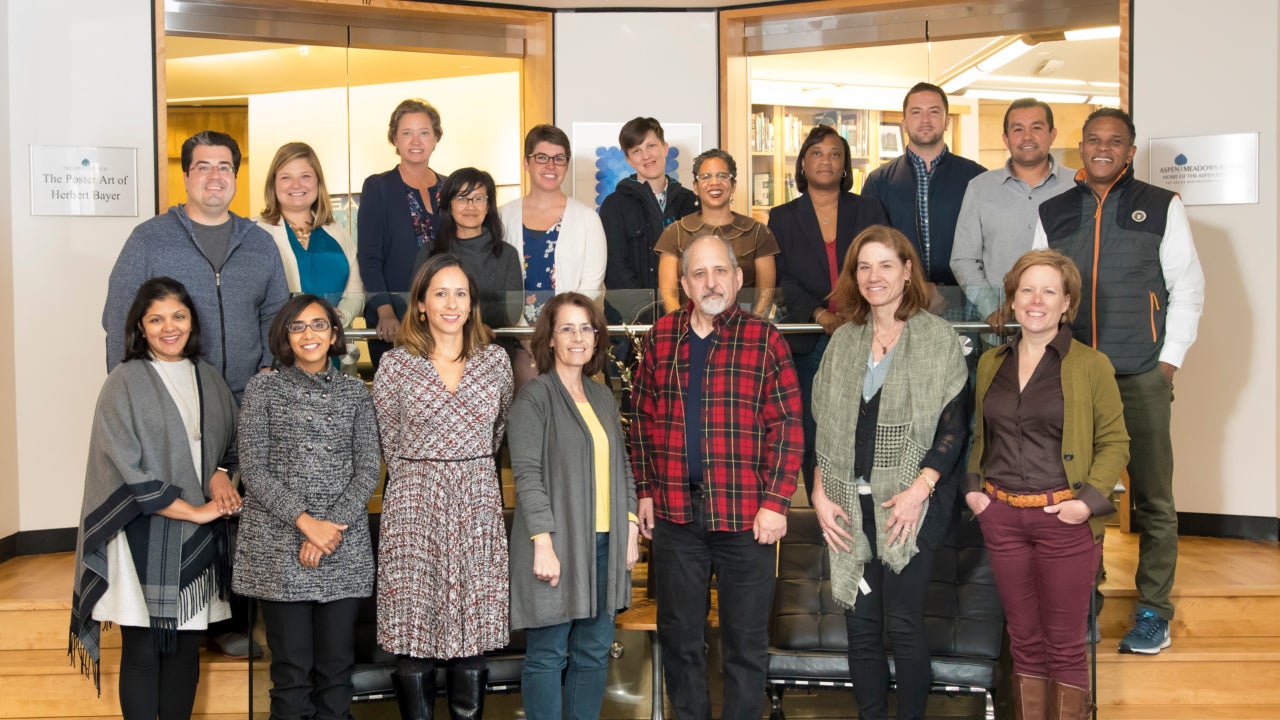Job Quality Fellow, Class of 2017-18
Executive Director, WorkLife Partnership
Managing Director, WorkLab Innovations, LLC

Why does improving job quality matter?
The gap between wages for many jobs and the cost of sustaining a family continues to widen for about 60 percent of today’s workforce. For frontline, low-wage workers, it is difficult to meet even basic needs. This is enormously stressful, affecting workers’ well-being and their ability to focus on the job. Addressing these needs is often the difference between a productive worker and a preoccupied worker. Unfortunately, this high level of stress is likely to worsen over the next 10 years. The US’s fastest-growing jobs — home health and personal aides — generally don’t provide livable wages. As The Washington Post recently reported, citing data from the Bureau of Labor Statistics, “The fastest-growing jobs in America pay about $22,000 per year.” Most of these jobs don’t offer benefits that might begin to offset low wages, such as affordable health insurance.
Job quality matters for business success. For this reason, businesses should be involved in the solution. I started a nonprofit workforce development organization, WorkLife Partnership, to work directly with businesses to make many more workplaces the access point to important resources and basic needs. This approach also meets core business needs. Our approach is called the Sustainable Workforce Model, named for its goal of ensuring workers can sustainably perform at their best. It is unique in that employers are really investing to support their frontline workers, covering 70 percent of the program’s costs.
How do you encourage businesses to invest in frontline workers?
We understand that to do business with business, we must speak its language — namely, data and numbers. We make our case by addressing three of businesses’ most significant pain points: worker turnover, engagement, and productivity. Currently, the turnover rate is as high as 64 percent in industries like retail, food, and hospitality, and there are high costs associated with recruiting and training new workers. This has bottom-line consequences. We demonstrate that employers lose when they accept high turnover as “business as usual.”
For businesses, data changes the conversation from “what we should do” to “what we can’t afford not to do.” Businesses in our program benefit directly from our 87 percent average retention rate and 250 percent return on investment. That is a great proposition for the business and for workers. Employers addressing their employees’ work-life issues see great gains in productivity, retention, recruitment, and profitability. As workers are engaged and supported, turnover declines and productivity increases.
Data also demonstrates to business leaders the extent to which workers struggle with basic needs. This encourages them to change spending and policies to improve workers’ lives. In my state of Colorado, for example, 70 percent of jobs pay less than $36,000 annually, and housing costs have risen rapidly. It matters to a business’s bottom line when workers spend 70 percent of their income on housing. This drives instability in workers’ personal lives and extends into their work lives. So numbers are key to building a narrative that addresses employers’ pain points.
How does the Sustainable Workforce Model function?
The Sustainable Workforce Model operates through a local nonprofit organization that offers services to employer members. The nonprofit brings local businesses together so they can learn from one another and pool resources that benefit workers. The role of the Navigator is core to our service delivery. Employers support a Navigator to help workers problem-solve around wide-ranging issues, including transportation, family and elder care, and access to behavioral health services. Navigators help with work and life issues out of earshot of managers, supervisors, and human resources staff. They help coordinate the logistics of support for workers.
When we first launched, our services for employers focused solely on improving retention by connecting eligible workers to government benefits and community resources. The main goal was to help get workers through crises and back to work quickly. Since then, we have expanded to services such as training and upskilling, free tax preparation at worksites, and an emergency loan program financed in partnership with local credit unions. Capturing data confidentially from employees gave us insight into the gaps that went unfilled by traditional benefit offerings and more clearly defined the ways in which employees were struggling. Often employers do not recognize these issues without this information.
Now we work with employers to jointly build solutions to work and life issues affecting their workers. As Navigators work with clients, we feed anonymous data to the business about their workers’ real struggles. These struggles can be related to employer policies, including difficulties accessing health care, shift changes that affect workers’ personal lives, and unsupportive management practices. We create detailed reports to help businesses focus on top challenges and help to define strategies in response. This can lead employers to invest in additional programs to improve job quality and boost worker engagement, such as career development, training, childcare, and transportation subsidies.
For instance, one of our employers in the manufacturing sector has used data demonstrating financial distress among their workers to make changes to workplace practices that improved job quality. This employer began incrementally increasing wages and implemented retention bonuses and personalized support for new workers. As a result, workers are more productive and engaged in the company, and retention has improved.
What are your job quality goals for the next few years?
In 2017, I joined with Connect for Success in Seattle, WA, The Source in Grand Rapids, MI, and Working Bridges in Northwest Vermont to launch a national network aimed at replicating and scaling the Sustainable Workforce Model. We’re doing this through a new partnership called WorkLab Innovations.
Over the past year, WorkLab Innovations has helped start the model in four additional cities: New Orleans, Chicago, Cincinnati, and Detroit. We plan to work in four additional cities in 2018. Our goal is to ensure employers and workers in all 50 states, over time, have access to our Model’s efforts. As we scale our model, we will support employers to develop better benefits for frontline workers, including workplace savings programs, loan programs, and lending circles. We will also continue to leverage data to develop new programs in partnership with employers, including more inclusive training and advancement programs and employee assistance programs.
How is the Job Quality Fellowship supporting your work?
As Fellows, we put our daily work aside and come together to talk through the greatest challenges to significantly boosting job quality. We share a common purpose. In our time together, I’ve grown in spirit, faith, and purpose. As a practitioner and business owner, I relish the comradery, scholarship, and practicality that the 16 Fellows provide. As I work to build a national organization, the Fellowship has become an important space to develop connections and forge new relationships with leaders across the country.
Share now
Tweet “Job quality matters for business success. For this reason, businesses should be involved in the solution.” -Liddy Romero
Tweet “The gap between wages for many jobs and the cost of sustaining a family continues to widen… For frontline, low-wage workers, it is difficult to meet even basic needs.” -Liddy Romero
Tweet “Employers addressing their employees’ work-life issues see great gains in productivity, retention, recruitment, & profitability. As workers are engaged & supported, turnover declines & productivity increases.” -Liddy Romero
We are grateful to the Ford Foundation and The Prudential Foundation for their support of this work.
